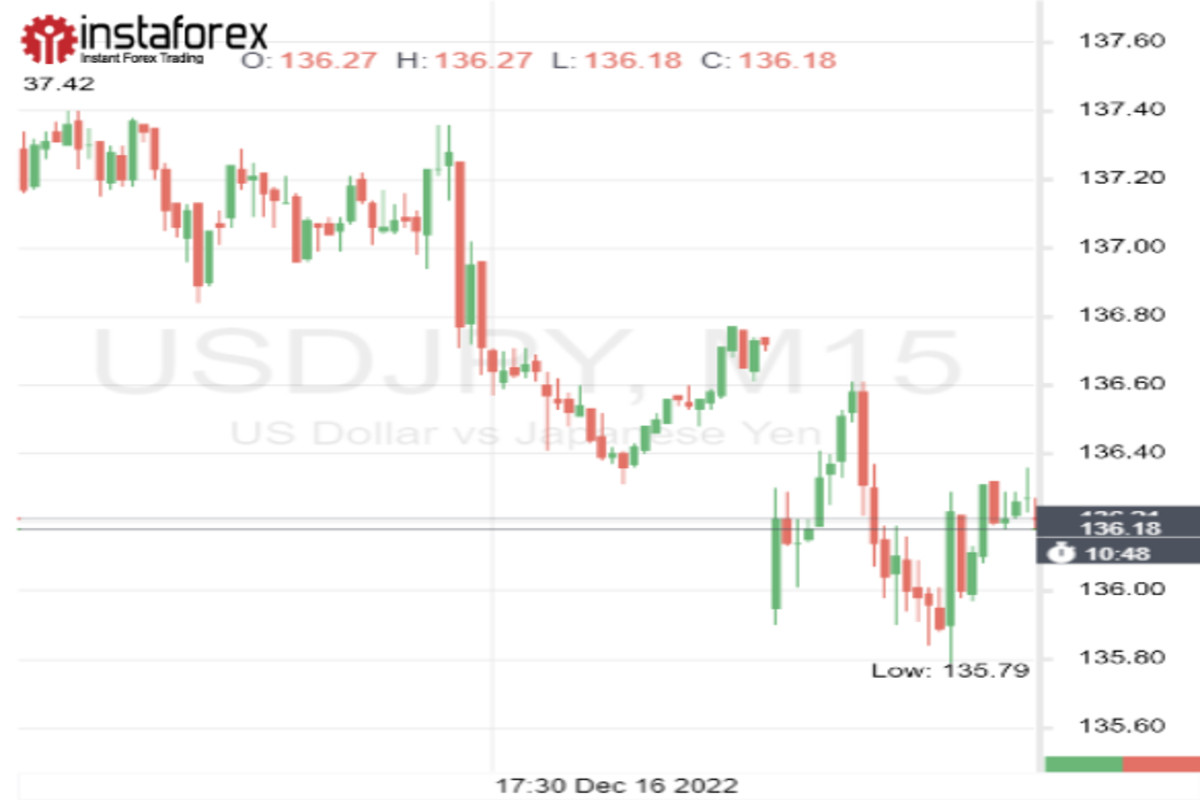
At the beginning of the week, those who are trading the USD/JPY pair will focus on the Bank of Japan meeting. The closer X-day is, the more the market is speculating about a possible BOJ pivot.
The past year was not easy for the BOJ, because it deliberately chose to not yield to the global trend of tightening.
While other central banks fought against inflation by raising rates, the BOJ continued to fuel the economy with massive stimulus and kept rates in negative territory.
The marginal stance of Japanese officials led to a significant weakening of the national currency on many fronts, but most of all the yen weakened against the dollar.
The strong divergence in interest rates between the U.S. and Japan, which has been observed throughout the year, brought the JPY down to 32-year lows.
The yen was only able to recover slightly towards the end of the year when there were signs of a possible slowdown in US tightening. The Japanese currency is now trading at 136, up 10.5% from its October low of 152.

Nevertheless, the pressure on the JPY still persists. The dollar showed its readiness again last week, having received strong support from the head of the Federal Reserve.
Despite weakening inflationary pressures in the US, Fed Chairman Jerome Powell intends to continue his hawkish course and is aiming for higher terminal rates.
At this point the fundamental advantage is back on the dollar's side as traders expect the interest rate differential between America and Japan to rise further.
However, there are fears that the yen might pull the blanket over itself in the near term if the Japanese central bank suddenly takes a tougher stance.
Of course, no one is expecting the BOJ to dramatically re-shape and announce the end of its ultra-soft policy. Right now, many market participants expect to hear just a hint of a potential rate change.
Analysts believe that even a slight hawkish signal from BOJ officials could lead to a strong drop in the USD/JPY pair.
Such a forecast is confirmed by the recent downward dynamics of the asset. In early Asian trading on Monday, the dollar fell against the yen by 0.6% on reports of a possible change in a key agreement between the Japanese government and the BOJ.
Over the weekend, we learned that Japanese Prime Minister Fumio Kishida may seek to revise a decade-old accord with the BOJ and will consider adding flexibility to the 2% inflation goal.
"The BOJ must get rid of commitments that bind its policy, so it can respond flexibly and nimbly to changes in the economy as needed," former BOJ deputy governor Hirohide Yamaguchi told Reuters.
Yamaguchi is one of the main contenders for the post of the next BOJ head. Recall that the term of office of the current chairman of the Japanese central bank Haruhiko Kuroda ends in April.
Now many economists believe that after his departure the BOJ will begin to adjust the policy of yield curve control, which provides for negative interest rates and keeps the yield on 10-year bonds at 0.25%.
According to Yamaguchi, at this stage, the BOJ must make its monetary policy framework more flexible and stand ready to raise its long-term interest rate target next year, provided that inflation remains stable.
"The BOJ will find it too risky to abandon YCC in a single blow. If so, the natural answer would be to adjust YCC in small steps," Yamaguchi said.
His comments contrast with Kuroda's recent statement, who does not even consider the possibility of rate hikes in the short term, believing that the recent price hikes are temporary.
We'll know tomorrow which way the BOJ will go. But no matter what decision Japanese politicians will take, analysts are certain that USD/JPY will show increased turbulence in the short-term.
Apparently, it will be the last strong dynamic of the asset this year. Next, we are waiting for quite sluggish sessions amid the approaching holidays.
 English
English 
 Русский
Русский Bahasa Indonesia
Bahasa Indonesia Bahasa Malay
Bahasa Malay ไทย
ไทย Español
Español Deutsch
Deutsch Български
Български Français
Français Tiếng Việt
Tiếng Việt 中文
中文 বাংলা
বাংলা हिन्दी
हिन्दी Čeština
Čeština Українська
Українська Română
Română

